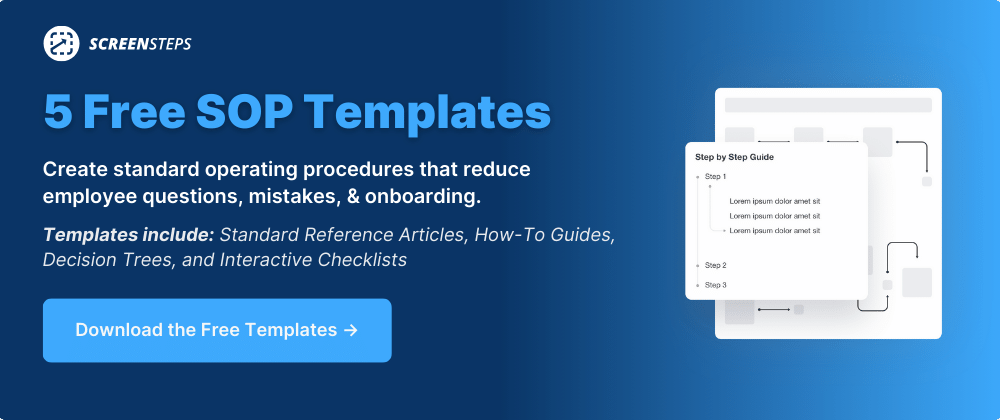How to Create a Quick Reference Guide (4 Steps)
When it comes to quick reference guides, the intricate details about how you actually write your guides are dependent on the software you use.
However, how you plan which content and figure out which information to include in your guides is the same. With that in mind, where do you begin?
With ScreenSteps — a knowledge ops solution — we've spent a lot of time figuring out best practices for creating guides that employees can actually follow. We've come up with a few necessary steps to get your QRGs to the right point.
Here are four steps to create your quick reference guides (QRGs).
1. Identify areas end-users need support
Which guides do you need to write? Before you actually start creating guides, you need to plan.
Hold a content planning workshop. At ScreenSteps, we call these planning sessions Find & Follow Planning Workshops.
These workshops help you identify what each role in your company needs to be able to do. Ultimately, this helps you determine which QRGs (or knowledge base articles) you need to write.
2. Figure out what information they need
Once you have a list over everything end-users need to be able to do, you can begin writing your QRGs.
For each task or question, determine a clear path to help them efficiently create each procedure or understand the information.
The easiest way to do this is to walk through the procedure yourself. As you work through a procedure, write down the steps you are taking and/or grab screenshots of the clicks you are making.
Alternatively, you can have subject matter experts (SMEs) write the guides or you can interview SMEs to gather the information.
3. Determine the easiest way to explain this to a person
A QRG has “quick” in its name, so how do you help people understand the concepts quickly?
You’ll want to use short phrases with actionable verbs. Instead of “If/then” statements, use questions and answers. This helps you keep text short.
When possible, pair your screenshots with annotated screenshots. These screensteps show step-by-step directions for where end-users need to click. After all, a picture is worth 1,000 words. That is especially true in QRGs.
For example, the information a person needs for how to wash there hands doesn’t include a lot of text. It is a series of pictures with short phrases that short you how to use soap and scrub your hands. (Bet you didn’t realize you were using QRGs in your day-to-day life … or at least surrounded by them.)
4. Test and refine the guides
Once you have written a guide, your work is not done. Before publishing your QRGs for a wider audience, beta test them.
Have employees use them. Observe how they use the guides. Do they get stuck anywhere? Is something confusing? Did you forget a step? Your job here isn’t to interfer — it’s to make sure your QRGs can stand on their own.
Take notes on what you observe. Then make edits and retest them until your end-users can complete procedures without needing to ask any additional questions.
Refine your guides to be more findable, followable, and scannable
When it comes to creating QRGs for your company, there is a lot of things to consider. Ultimately, it comes down to one thing — do your guides help people do things without making mistakes?
If the answer is yes, than way to go! If the answer is no, never fear! There is always room for improvement. And we can help teach best practices on how to create clearer guides.
With a ScreenSteps knowledge base, we have simple authoring tools so you can quickly create new guides. Then all the information is centralized in one location, which makes it easy for end-users to search and find the information they need. Employees can find guides in as few as 2 clicks!
Download our free Digital Guide Template Packet to get access to 5 free templates for creating QRGs that are findable, followable, and skimmable.



